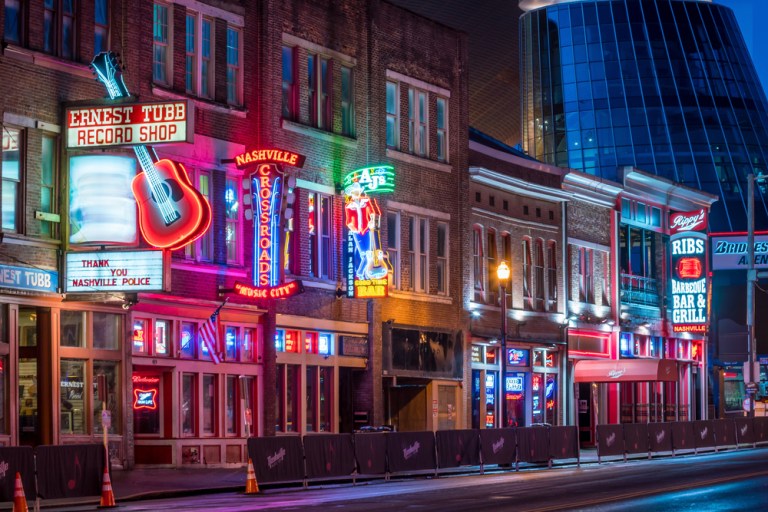A reservation can make life easier for restaurant staff and their guests, letting them book a table ahead of time. Or it can make the experience harder.
For restaurant owners and managers, having a reservation for tables ahead of time helps them order food and schedule staff accordingly. They can stagger reservations on peak evenings to maximize traffic and avoid swamping cooks and bartenders with simultaneous orders. It’s also an opportunity to make an impression through top-notch customer service.
“Reservations are preferable for a place like ours, because we’re not really casual,” said Q-Juan Taylor, managing partner of Nashville’s Sinema restaurant. “Because of the type of dining that it is, a reservation helps you plan for the night. From a service point of view, you want to provide that flawless service, and mapping out reservations and strategizing is necessary for a place like ours.”
For guests, a reservation eliminates uncertainty. Nashville Scene noted that it’s nearly impossible to go out for dinner in Nashville and find a table without a reservation anymore, at least on the weekends. The locals can’t even get in. A reservation is a promise that a seat will be waiting when guests arrive at the restaurant.
The problem is, sometimes the seat waits and the guests never arrive. Tock, a mobile reservation booking app, cites the industry standard for no-shows around 10 percent. Some restaurateurs estimate that as many as 25 percent of guests never show.
Suddenly those restaurants aren’t maximizing anything. Instead, they’re turning guests away at the door to save a table for a non-customer. Hit the flush handle and watch that money spiral down the toilet.
Advertisement: Scroll to Continue
That’s one of the problems that mobile reservation booking apps endeavor to solve. Enter OpenTable, the smartphone app and website that lets diners book a table with just a few clicks.
In a scene like modern-day Nashville, for instance, not having OpenTable could be suicide. Everyone else has it. One hundred sixty-three Nashville restaurants complete their booking through mobile app OpenTable.
Worldwide, more than 42,000 restaurants used the service just in the first quarter of 2017. 21 million diners reserve a seat through OpenTable each month. Oh, and it cuts the no-show rate to 4.6 percent for reservations made through the app. That’s a powerful tool.
Taylor said that 60 percent of Sinema’s reservations come through OpenTable, and he thought the business would struggle without it.
For others, the mobile app is the struggle. OpenTable charges up to $1 per person, which can add up fast. Many restaurants pay over $4,000 a month for the service. That can be absorbed, at least somewhat, by higher-end establishments, but at a restaurant where the average entrée is $16, the numbers aren’t going to work.
Luckily, there are options. See: Tock, Resy, Reserve, Eveve, CityEats – the list of competitors goes on. While none have even close to OpenTable’s market share, they can be a better solution for some, depending on the needs of the restaurant (usually related to cost).
Tock requires users to pay a small deposit when they book a table. Requiring that small financial commitment slashes no-shows to practically zero. Also, using Tock costs even the busiest restaurants under $700 a month.
Like OpenTable, the platform offers insights that empower restaurants to add a human touch, even though they’ve hired an app to make their reservations.
For instance, diners can supplement their experience with special add-ons, like a bottle of their favorite champagne waiting at the table when they arrive. Or perhaps they’re looking for a wine pairing for the whole menu or a signed copy of the chef’s cookbook or an experience specific to an individual diner. Or maybe they just need to let the restaurant know that someone in their party has a gluten allergy.
With apps like Tock and OpenTable, they can consider it done and even pay for it all beforehand.
“The final course doesn’t have to be a check,” said Tock Director of Marketing Kyle Welter. “If a diner prepays for an experience … the waiter can thank the diner for joining, and then they are free to walk out. If you have experienced this, it’s a magical moment.”
Tock also has the advantage of offering insights across multiple restaurants owned by the same person. Diners’ likes, dislikes and other notes can then be transferred between those establishments to improve their experience the next time they visit.
Of course, the key word for Tock is experience. Though the platform has the capacity to work on a large scale, completing as many as 10,000 reservations in under 90 seconds, Welter said it’s really not designed for large chains.
“We did not build Tock for standard chain restaurants just trying to fill seats and help diners find a table,” said Welter. “We focus on partnering with restaurants who care about offering unique guest dining experiences. This is why we use the verbiage ‘reserve your experience.’”
For some, Tock is the middle-of-the-road solution that they were looking for. Many establishments, however, are reaching the conclusion that an app isn’t the magic fix they thought it was.
“Reservations are more of a guide than a rule for us,” said Sarah Gavigan, owner of Little Octopus in Nashville’s Gulch. “We really want people to know that they can come here, and we’ll get them in. Start at the bar, enjoy your evening and we’ll get you in. Reservations don’t really say that — they say, ‘We have it, or we don’t.’”
To communicate that, Gavigan switched to Resy, another reservations competitor. Bonus? The pricing for Resy is one-tenth of what she’d been paying to OpenTable each month. Still, Gavigan told Nashville Scene that she might abandon Resy and just go back to pen and paper, joining ranks with Margot McCormack, owner of East Nashville restaurant Margot.
For McCormack and others, having a human reservationist is almost more of a novelty in today’s dining landscape — a breath of fresh air among the automation.
A human reservationist can upsell, answer questions about layout, menu or capacity, troubleshoot issues for unhappy clients, handle PR or human resources requests, fulfill special requests on occasions like birthdays and anniversaries, and optimize revenue and performance by staggering reservations just right during busy shifts.
And, quite simply, it adds a human touch that makes people feel welcome and keeps customers coming back for more. There’s not an app for that.




